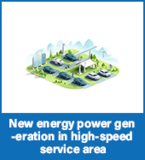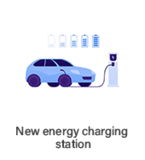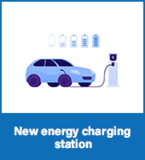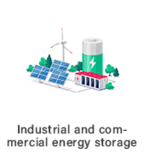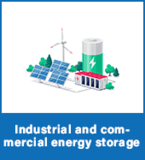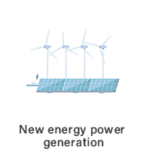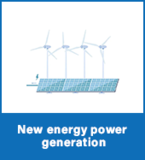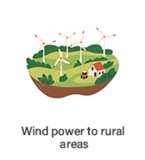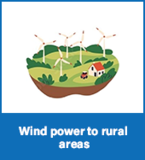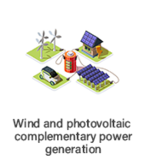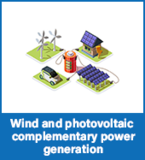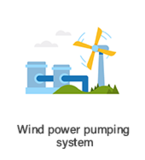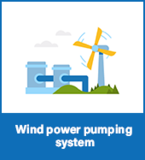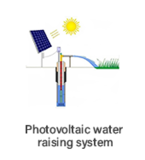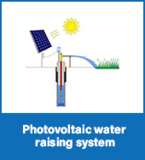NEW ENERGY POWER GENERATION IN HIGH-SPEED SERVICE AREA
Photovoltaic power generation system:
一、System Design and Installation
Site selection: Install photovoltaic panels in areas with sufficient sunlight and few obstructions, such as roofs, parking lots, and slopes in the high-speed service area.
Component selection: Efficient and durable photovoltaic modules are used, such as N-type TOPCon double-sided double glass photovoltaic modules, which have the advantages of high power generation efficiency, good weather resistance, and low operation and maintenance costs.
Bracket design: Design suitable bracket structures based on site conditions to ensure that photovoltaic panels can be installed at the optimal angle and maximize power generation efficiency.
Grid connection: Connect the photovoltaic power generation system to the service area grid to achieve grid connected power generation and surplus electricity grid connection.
二、System operation and maintenance
Intelligent monitoring: Build an intelligent monitoring platform for photovoltaic power generation systems to monitor the real-time power generation status, output, and other data of photovoltaic panels, ensuring the stable operation of the system.
Regular maintenance: Clean, inspect, and maintain photovoltaic panels regularly to prevent potential failures and improve system power generation efficiency.
Wind power generation system:
一、Wind resource assessment
Conduct a wind resource assessment around the high-speed service area to determine suitable areas for installing wind turbines.
二、Selection and installation of wind turbines
Based on the assessment results of wind resources, select suitable wind turbine models and install them in areas with abundant wind resources.
Ensure that the wind turbine is coordinated with the surrounding environment and landscape to avoid adverse effects on the operation of the service area.
三、Grid connection and operation and maintenance
Connect the wind power generation system to the service area power grid to achieve grid connected power generation and surplus electricity grid connection.
Establish a wind power system operation and maintenance team responsible for the daily operation, maintenance, and troubleshooting of the system.
Energy storage technology:
一、Energy storage battery selection
Choose high-capacity, long-life, and high-efficiency energy storage batteries, such as lithium-ion batteries, to meet the electricity demand of the service area during peak hours.
二、Selection and installation of wind turbines
Reasonably allocate the capacity and quantity of energy storage batteries based on the power demand of the service area and the power generation of photovoltaic and wind power systems.
Build an energy storage battery management system (BMS) to achieve intelligent management and monitoring of energy storage batteries.
三、Charge and discharge control
Adopting an intelligent charging and discharging control strategy, the charging and discharging status of the energy storage battery is automatically adjusted based on the power demand of the service area and the power generation of the new energy generation system.
When the new energy generation capacity is sufficient, priority should be given to using the new energy generation system for power supply, and excess electricity should be stored in energy storage batteries; When the new energy generation capacity is insufficient, use energy storage batteries for power supply or switch to the service area power grid for power supply.
Integrated Energy Management System:
一、System construction
Establish a comprehensive energy management system that integrates photovoltaic power generation systems, wind power generation systems, energy storage systems, and service area power grids into a unified management platform.
二、Energy dispatch
1. Through a comprehensive energy management system, achieve energy scheduling and optimized configuration between photovoltaic power generation systems, wind power generation systems, energy storage systems, and service area power grids.
2. Dynamically adjust the operating status of each system based on the power demand of the service area and the power generation capacity of the new energy generation system, ensuring the stability and reliability of the power supply in the service area.
Social and economic benefits:
一、Social benefits
Reduce dependence on traditional energy sources, lower carbon emissions, promote environmental protection and sustainable development.
Provide green and low-carbon energy services for passing vehicles and passengers, enhance the image and brand value of the service area.
二、 Economic benefits
By constructing and operating new energy generation systems, the cost of electricity in service areas can be reduced and economic benefits can be improved.
Utilizing the policy of connecting surplus electricity to the grid, selling excess electricity to power grid companies to increase revenue sources for service areas.



